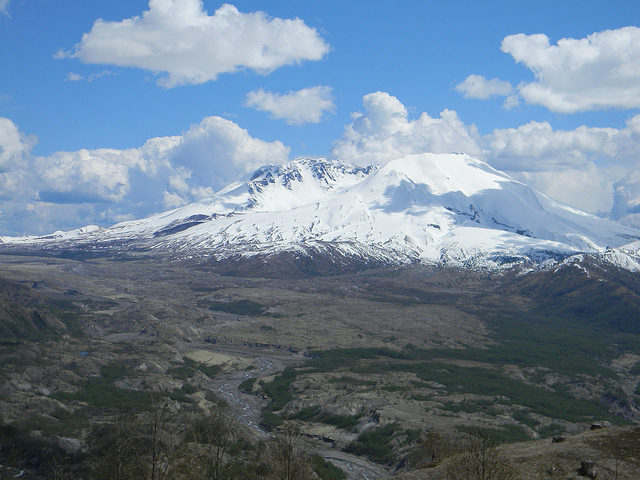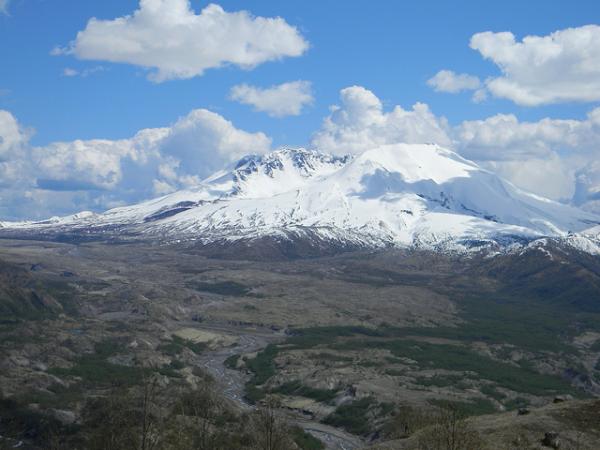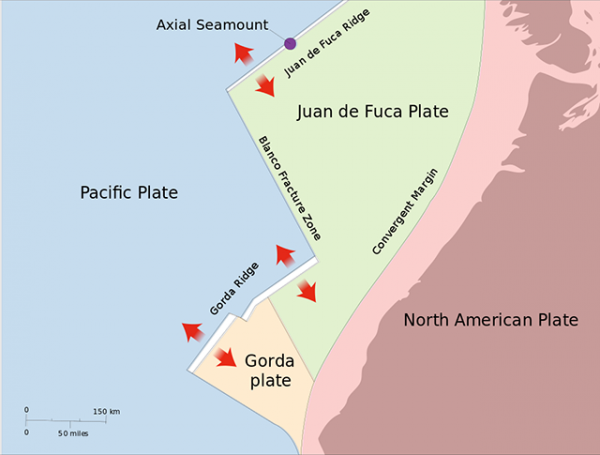KID REPORTERS’ NOTEBOOK
Mount St. Helens Rumbles


Mount St. Helens is most famous for a 1980 volcanic eruption, which killed 57 people. Recently, the area was the site of several minor earthquakes.
In early January, residents living near Mount St. Helens, a volcanic mountain in Skaminia County, Washington, felt tremors beneath them. The tremors were caused by a magnitude 3.9 earthquake.
At the time, the event was not considered a big deal. After all, hundreds of tiny earthquakes occur every day. But this one provided a glimpse into what many people on the West Coast of the United States fear—the Great Cascadia Earthquake.
The Great Cascadia Earthquake is an earthquake that occurs every 500 years, on average, in the Cascades, a mountain range in Washington State that includes Mount St. Helens.
COLLIDING PLATES
“The story starts with plate tectonics,” Seth Moran told me in a recent phone interview. Moran is scientist-in-charge at the Cascades Volcano Observatory. Located in Vancouver Washington, the observatory is run by the U.S. Geological Survey, a scientific agency of the U.S. government.
The world is made up of seven major plates, Moran explained. They are constantly moving, at a pace of up to a few inches per year.
The Pacific Northwest is on the North American Plate (see illustration below), which is moving in a westward direction. Nearby is the Juan de Fuca Plate, which is moving east.
“The two plates are colliding, and they’ve been colliding for a long time,” Moran said. “What’s happening when they’re colliding is that the Juan de Fuca Plate is ‘losing,’ and it’s going underneath the North American Plate.”
When the plate is pushed underneath, there’s going to be a place where things get stuck, about a 50- to 60-mile stretch. At the point where the plates get stuck, stress will build up.
There are various ways that the stress could be released—in several medium-magnitude earthquakes, or one giant earthquake. The giant earthquake could trigger a tsunami (giant sea wave), which would devastate the Pacific Nothwest.

This illustration shows the geologic boundaries around Mount St. Helens.
THE MILLION DOLLAR QUESTION
Are residents ready for this type of natural disaster? In many ways, the answer is no. “Some fraction of buildings, roads, and pieces of infrastructure will likely fail,” Moran said, because they are not strong enough to withstand a major earthquake.
Nonetheless, we can still prepare for the challenges that an earthquake might bring. “The message that we in the scientific community are trying to relate is that it’s important to have emergency supplies on hand,” Moran said. An emergency kit should include water, canned or powdered food, a flashlight, batteries, a first-aid kit, a radio, and a cell phone. Even if you don’t live on the West Coast, making an emergency plan with your family for any type of natural disaster is still a good idea.
